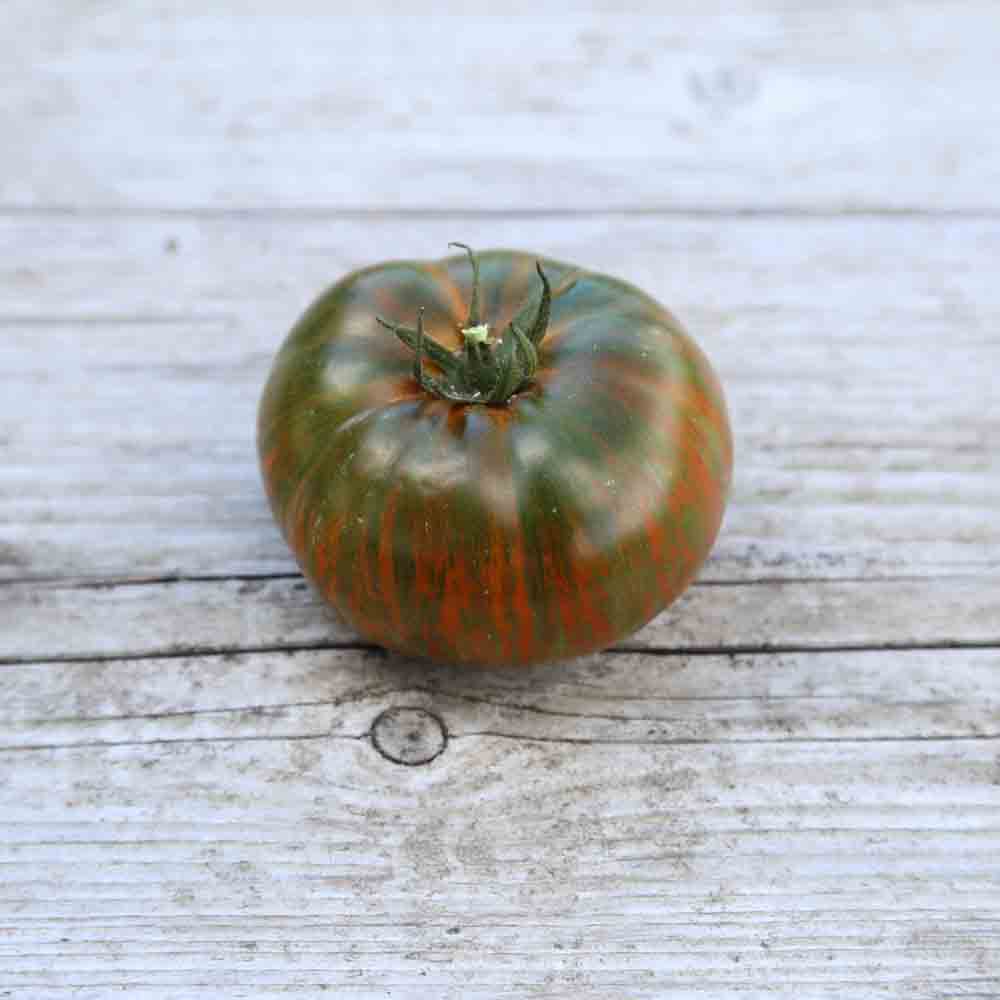TOMATO CHOCOLATE STRIPES AB
Solanum lycopersicum
The Chocolate Stripes tomato is an indeterminate tomato variety with large fruits, 8 to 10 cm in diameter, approximately 180 grams, native to Ohio. Mahogany, striped with green and black like the Black Zebra tomato, the Chocolate Stripes is a mid-season tomato (65 to 80 days) with a complex, rich, and sweet flavor that is eaten mainly in salads. It produces fruit until autumn. When and how to sow the Chocolate Stripes tomato? Sowing: from February to April in a warm bed (20°) or in pots indoors or in a heated greenhouse, in fine seed compost. Tomatoes need a minimum constant temperature of 20°C to germinate. Bury your tomato seeds 1 cm deep then cover with seed compost. Water your compost with a sprayer to keep it moist but not soggy. Place your terrine near a window to prevent your seedlings from shooting upwards in search of light. Transplant in place when frost is no longer a risk and the plants are 12 to 15 cm tall in rich, loose, and healthy soil. Distance: 70 cm between rows and 50 cm on the sunny row. Put the stakes in place before starting planting. Water thoroughly at the base once a week to prevent the development of diseases. Should we remove the suckers from tomato plants? Points of view differ on how to approach the famous pruning of tomatoes and each gardener has arguments to justify his theory. To the question "what to do?" the answer is very simple: whatever you want! Pruning tomatoes by de-budding is not mandatory, it is intended to increase the size of the fruits, their earliness and facilitate the work of harvesting. This method nevertheless has two drawbacks: it requires time and discernment. Indeed, the head of the tomato plant is not always easy to distinguish from a secondary branch. In addition, removing suckers causes wounds for your plant. It is therefore strongly recommended to consider helping the healing process by dusting with maerl or a green clay wash. Another option is not to prune at all and allow the plant to fully develop. It will therefore need more space in the garden, i.e. 1 m between each plant. The fruits will be smaller but more numerous. A third solution is to train on two strands. After pinching the plant 20 cm from the ground, only the two strands that form laterally are kept. Then all the suckers are removed. Harvest You will be able to harvest the tomatoes 4 to 5 months after sowing. Enemies The main problems that can be encountered with tomato cultivation are downy mildew and apical necrosis (black bottom). To avoid downy mildew, the best solution will be to protect your plants if you live in a region where rain is frequent. You can also carry out a treatment with Bordeaux mixture. Blossom end necrosis, or black bottom, is not a disease. It's caused by either low calcium levels in the soil or irregular watering. When a plant lacks water, it produces less sap, and the part furthest from the stem will die due to lack of nutrients. Therefore, water regularly, thoroughly once a week, for example.









